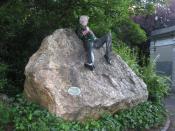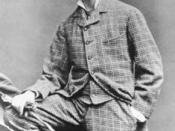Introduction
Not many people in business get the opportunity to make mistakes in a safe environment. Errors in judgment, particularly in the highly competitive consumer electronics retail business, are not only costly to the business, but also to careers. As Oscar Wilde put it, "Experience is the name everyone gives to their mistakes." For that reason, the benefit of the University of Phoenix "Thinking Critically" simulation is that the user has the opportunity to learn from errors and, instead of receiving a poor performance review, try again until getting it right. This paper explains the tools and techniques used by the writer, acting as manager of the store in the simulation, to make decisions while using the simulation, discusses key points emphasized, and documents the lessons learned.
Tools and Techniques
The initial task faced by the young Credenhill protegé, newly assigned to the role of manager of the store, was to decide which of the issues faced by the store were symptoms and which were real problems.
The manager first listed the issues and then placed them where he thought they should be on a 'fish bone' or 'cause and effect' diagram. While usually used to reveal the causes or contributing factors of a problem (HCi Professional Services, 2005), the tool proved effective in helping the manager to map the symptoms around the applicable problems. Some rearranging was required and some issues ended up being placed on their own because they were isolated from the main issue of falling sales, but the tool proved effective in this instance.
The next task was to prioritize the true problems using a 2X2 matrix. The matrix categorized problems based on whether they were critical/urgent, non-critical/urgent, critical/non-urgent, or non-critical/non-urgent. The matrix proved effective in focusing the manager on the problems that required the greatest...


